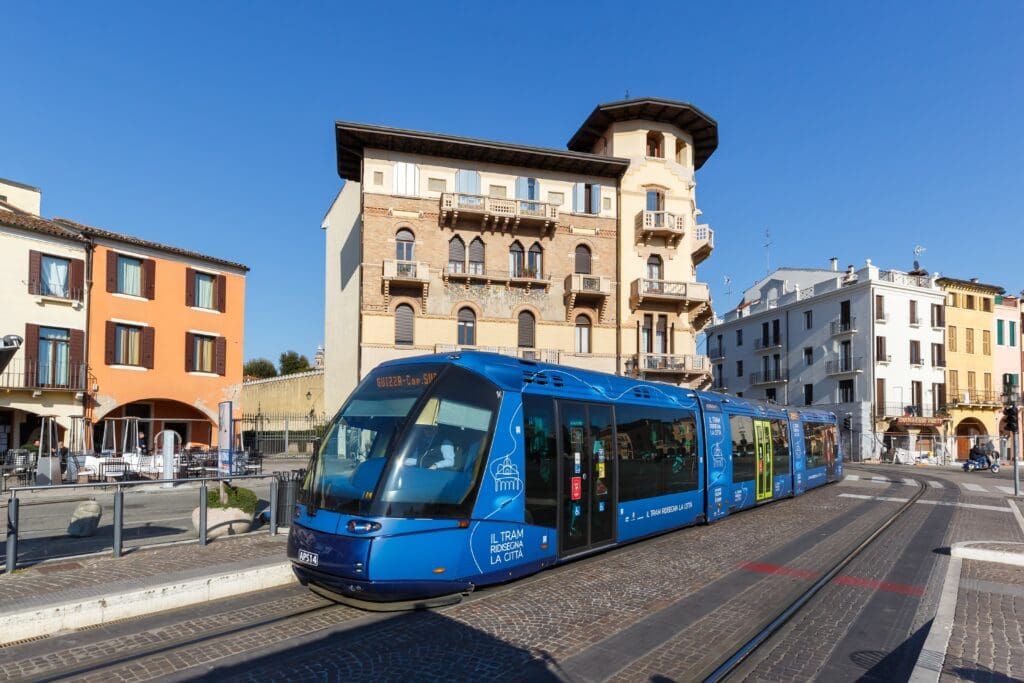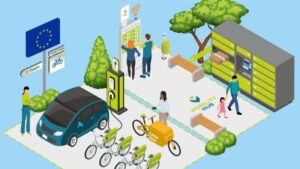By Scott Shepard
Cities across Europe are constantly changing, and this rate of change has only accelerated since the pandemic. To accommodate the shifting needs of citizens and visitors, a comprehensive vision is required to better organise the complex systems that comprise the “urban organism”. Traditional urban planning has in the past been the go-to method in which policies are crafted for future development. However, a better approach has been taken recently in Europe that brings multiple disciplines together to develop the best vision for a sustainable urban future. And that approach is the SUMP.
What is a SUMP?
Sustainable urban mobility plans (SUMPs) are the cornerstone of European urban mobility policy. They transform urban areas into livable, sustainable cities in line with climate change, and social and economic policies. These comprehensive plans can improve the overall quality of life for residents by addressing major challenges related to congestion, air/noise pollution, climate change, road safety, and parking. To support the urban planning process, local leaders can use many resources to develop SUMPs, including the Urban Mobility Observatory SUMP Guidelines and Decision Makers Summary. This summary gives stakeholders clear guidelines and best practices on what works well in other cities. As a general rule, a SUMP is to be used by local and regional authorities for strategic mobility planning and to encourage a shift towards sustainable transport modes and balanced urban development.

SUMP: Aims and Implementation
The key to successful SUMP implementation is the incorporation of its four key aims, which include:
- Improving safety and security
- Reducing air and noise pollution, greenhouse gas emissions, and energy consumption
- Improving the efficiency and cost-effectiveness of the transportation of persons and goods, and
- Contributing to enhancing the attractiveness and quality of the urban environment and urban design.
The SUMP should cover the entire functional urban area, and coordinate between all levels of government, local, regional, national and across different policy areas. It is recommended to be prepared in partnership with local residents and stakeholders, using various methods of public outreach and engagement. This ensures a variety of sustainable transport options for the safe, healthy and seamless passage of people and goods, with consideration for residents and the urban environment.
The Sustainable Urban Mobility Plans (SUMPs) Course by UMX Urban Mobility Explained is a valuable resource for urban mobility planning, guiding learners through key modules on the importance, enablers, outreach, and development cycle of SUMPs.
SUMPs vs Traditional Planning Techniques
Cities across Europe are now coming to terms with the auto-centric metropolis and suburban sprawl. Traditional planning techniques that were previously dominated by the 20th century urban planning paradigm led to the current mobility issues we now have in our cities. These issues include traffic congestion, low density urbanisation, social inequality and exclusion, low quality public transport, and low quality or lack of infrastructure for walking and cycling. By contrast, SUMPs are developed by interdisciplinary planning teams in a comprehensive approach, and incorporate eight commonly accepted guiding principles.
SUMP’s Guiding Principles Checklist
1️⃣ Plan for Sustainable Mobility in the Functional Urban Area
Understand daily flows of people & goods and identify urban mobility needs
2️⃣ Cooperate Across Institutional Boundaries
Foster collaboration across government levels & institutions
3️⃣ Involve Citizens & Stakeholders
Ensure public participation for acceptance & ownership
4️⃣ Assess Current & Future Performance
Evaluate the transport system & future mobility plans
5️⃣ Define a Long-Term Vision & Implementation Plan
Plan for integrated, multi-modal, and future-proof transport
6️⃣ Develop All Transport Modes in an Integrated Manner
Enhance quality, safety, accessibility & affordability
7️⃣ Arrange for Monitoring & Evaluation
Track progress, identify issues, and adjust where needed
8️⃣ Assure Quality
Ensure data reliability & risk management through reviews
This new approach to urban and transport planning actively involves the participation of citizens and stakeholders. The main objective of SUMPs versus traditional planning is to improve the quality of life for people, and not cars.
SUMP Case Study: Padova, Italy
Padova, located in the northeastern corner of the Po River Valley in Northern Italy, is one of Europe’s most challenging areas in terms of air quality. Despite this, it remains a major hub for services, tourism, and culture, surrounded by a dynamic region that has seen significant growth in recent years.
To address mobility challenges and improve air quality ,the Municipality of Padova, in collaboration with local municipalities, commissioned the preparation of a SUMP plan to outline the mobility vision, with a primary focus on improved air quality. The SUMP implementation process in Padova is currently ongoing and continues to demonstrate success, such as the adoption in 2019 of the Padova Bike Master Plan.
Some of the key policy recommendations from Padova’s SUMP to enhance air quality and the urban environment include:
- Strengthening the availability of public transport (tramway and BRT)
- Developing a shared space approach and reduce road speed limits (road safety)
- Defining interventions on road infrastructure (e.g. adaptation/upgrading of primary road network, bypass city centres)
- Improving the cycling network and services
- Enhancing shared mobility schemes and practices
- Developing e-mobility and ITS measures (e.g. access control, smart parking)
- Improving and expanding decarbonised urban logistics (e.g. through the implementation of a Low Emission Zone in the city centre).

As Padova continues to roll out its SUMP initiatives, the city sets an example for sustainable mobility and urban innovation in Italy and beyond.
SUMP Success Stories
Padova’s progress is just one of many success stories across Europe, where SUMPs have played a transformative role in reshaping urban mobility. Over the past decade, many European cities have adopted this approach, resulting in improvements in air quality, congestion and public transportation. Here are a few examples of these success stories:
- Madrid saw a 15% reduction in nitrogen dioxide pollution in just three months after establishing low emission zones in its SUMP in November 2018.
- Measures in Milan’s SUMP of 2016 have contributed to bringing the number of residents using cars already down to 50%, well below the Italian average.
- Nearly every major French city has seen a reversal in the trend of increasing car use. Increases of as much as 22% in the two preceding decades were halted and replaced by decreases of up to 8%.
- In Szeged, Hungary’s third largest city, the SUMP helped to freeze a rapid decline in public transport use.
- Milan took into account input from 755 citizens and introduced a low emission zone restricting car use in approximately 70% of the city
Conclusion
With over 70% of EU citizens currently living in urban areas, urban mobility has a huge influence on the quality of life that they have. Yet traffic congestion, bad air quality, and inefficient transport systems continue to impact upon lives across the continent. An approach is urgently required that places citizens’ needs first. By improving accessibility to, through and within urban areas and encouraging a shift towards more sustainable modes of transport, SUMPs do exactly this. And as a result, both cities and their inhabitants in turn enjoy significant economic and environmental benefits.
Ready to be a driving force in shaping the future of your city? The Sustainable Urban Mobility Plans (SUMPs) Course by UMX Urban Mobility Explained empowers you with the knowledge and tools to transform your city. Learn how to move beyond traditional planning, engage your community, and implement integrated solutions that prioritise sustainability.

Scott Shepard
Founder & CEO @The #CitiesFirst Advisors + Podcast | Author @”#CitiesFirst: Urbanism & Mobility in the Post-COVID City” | Board @Green Mobility Magazine & Intermobility | Advisor @Urban AI | Top Urban Planning Voice





